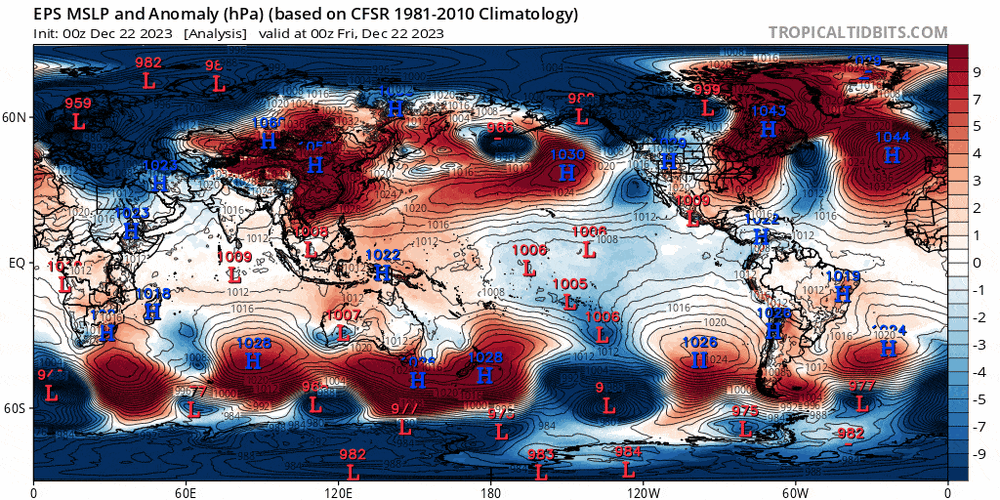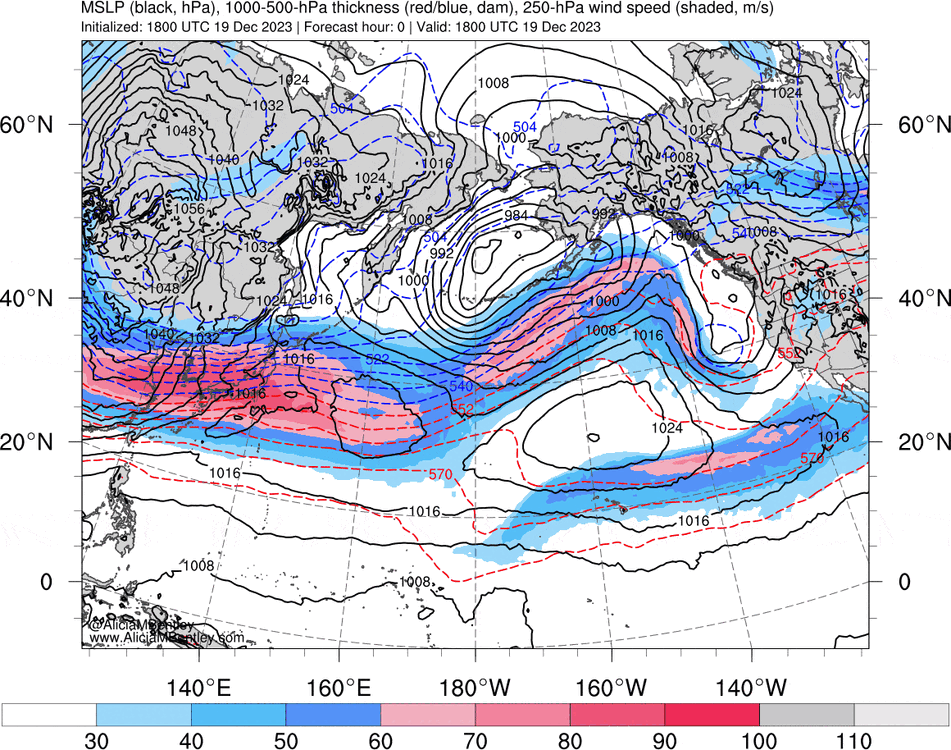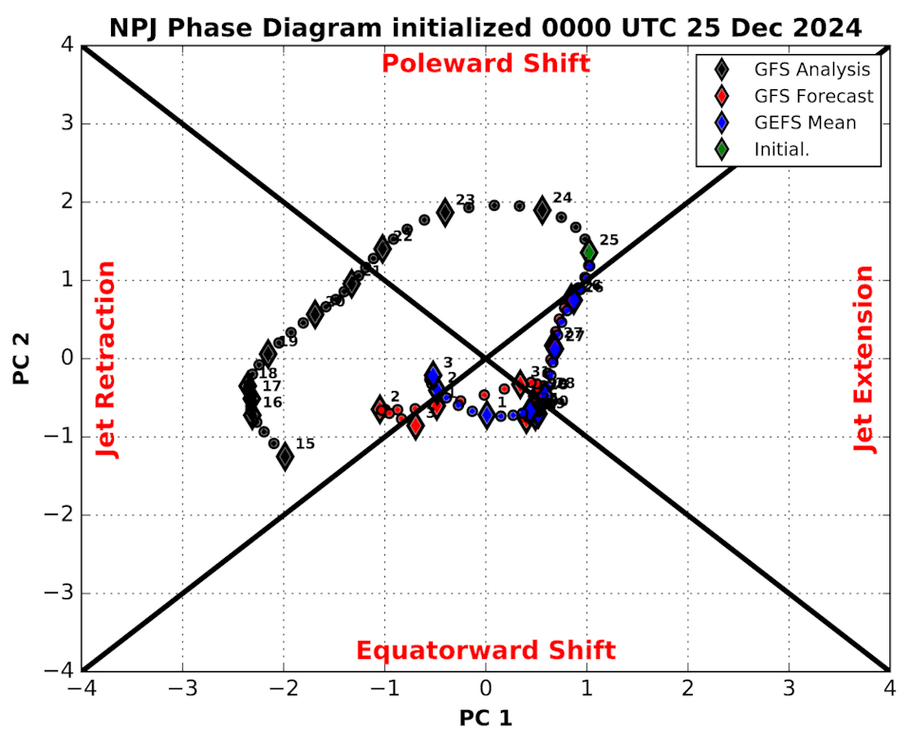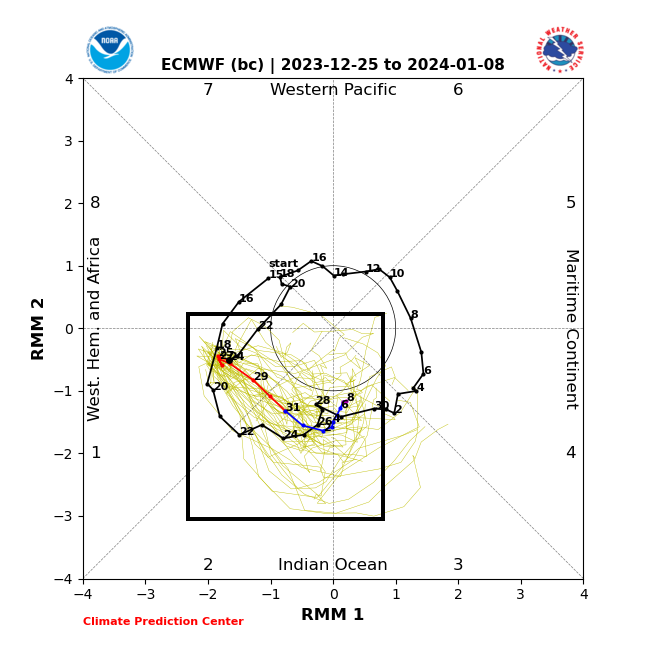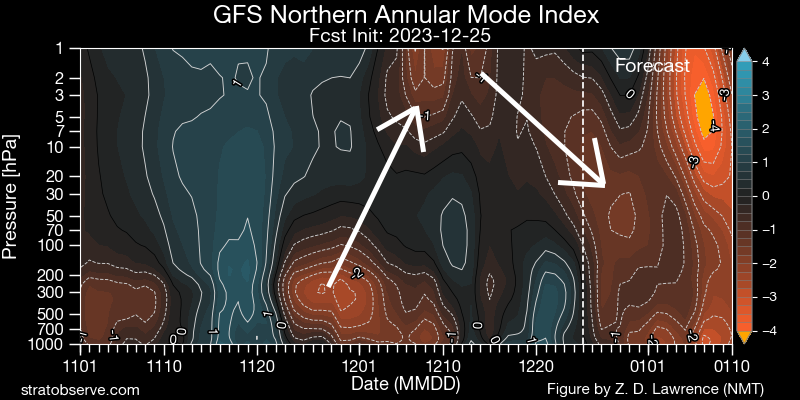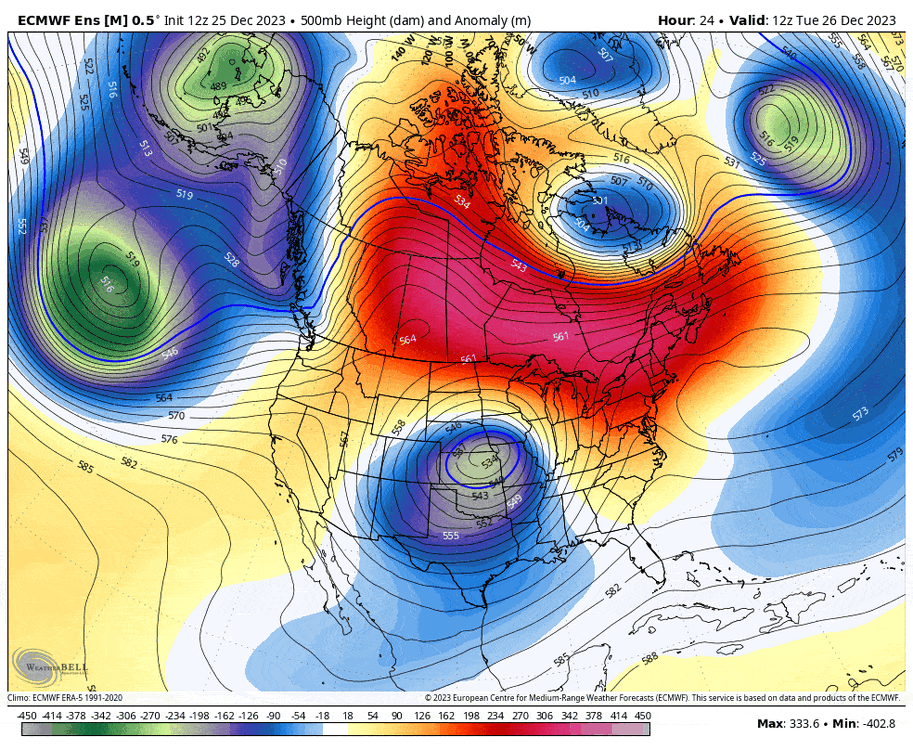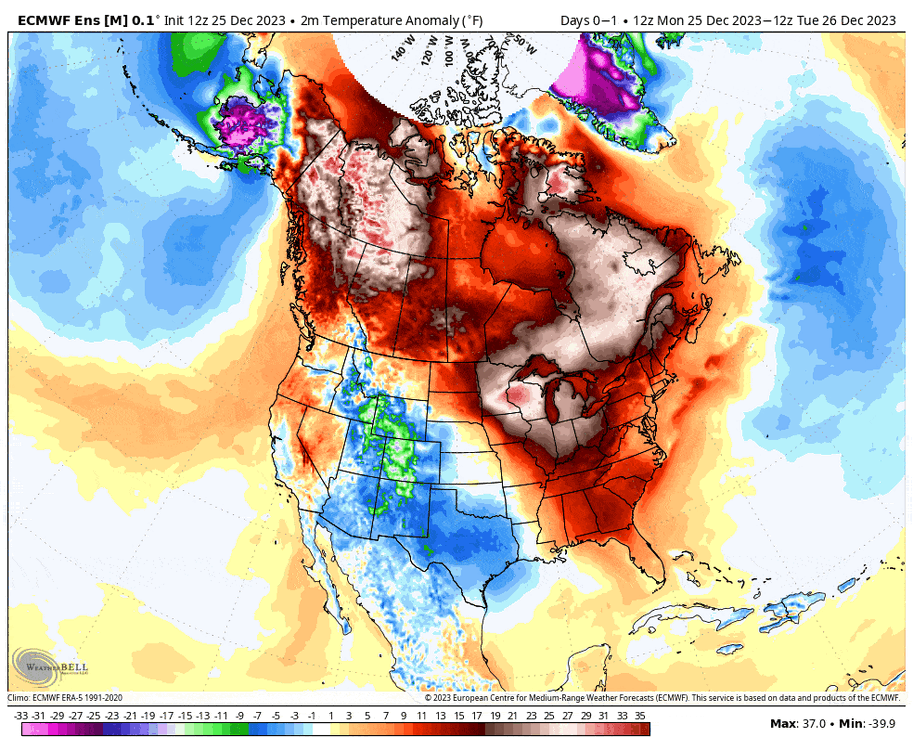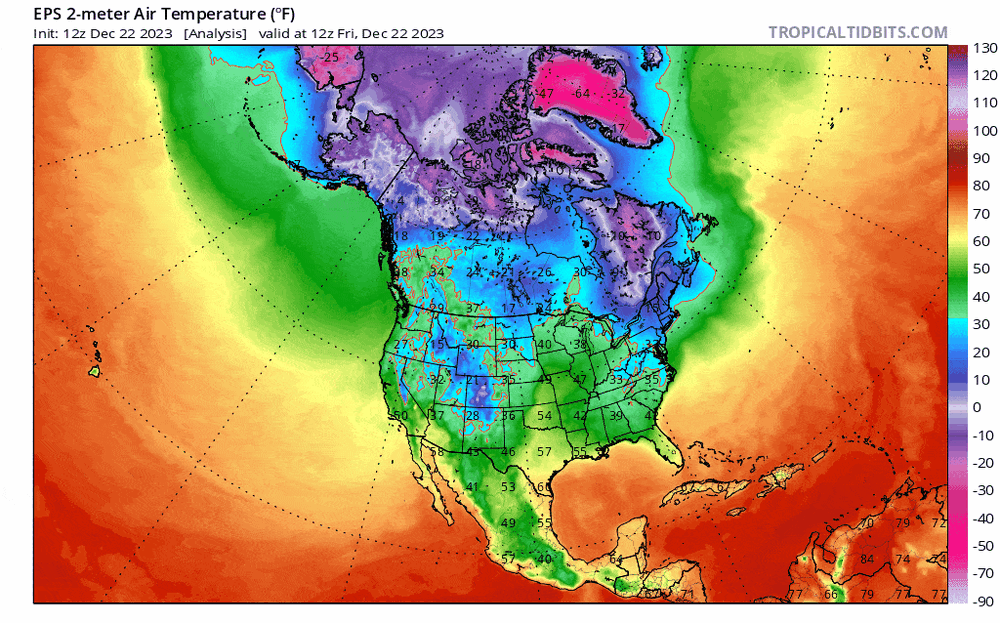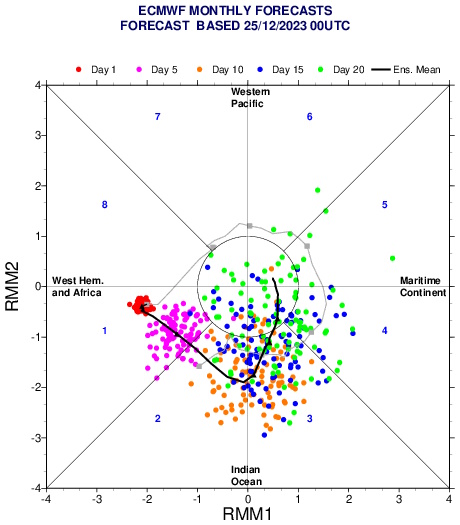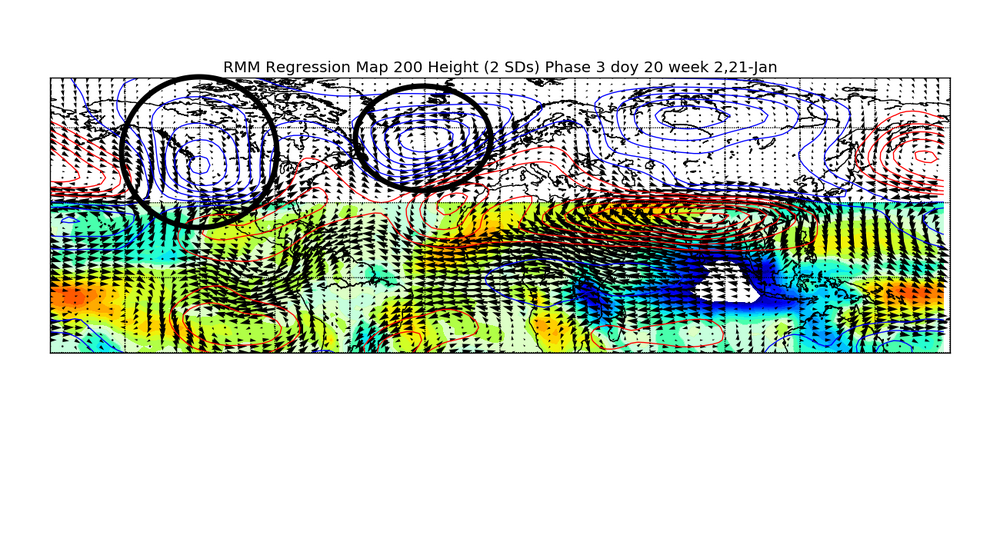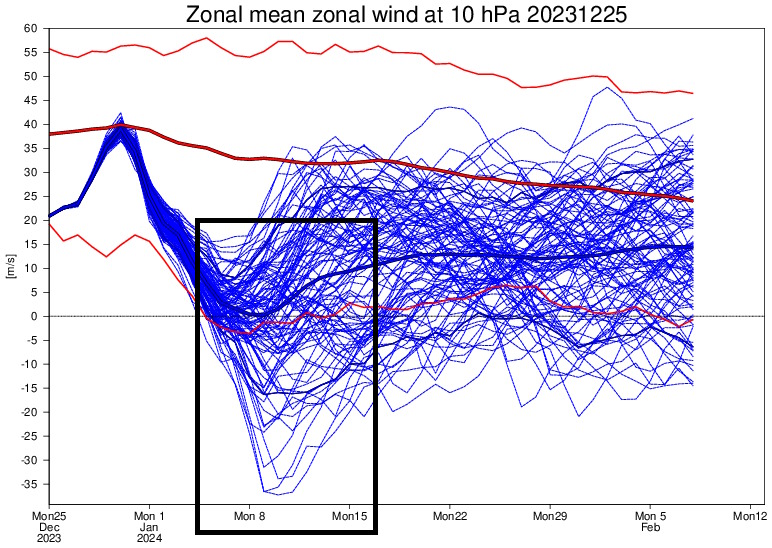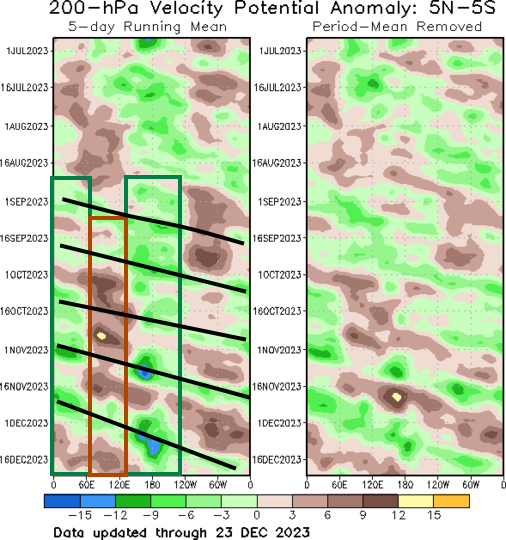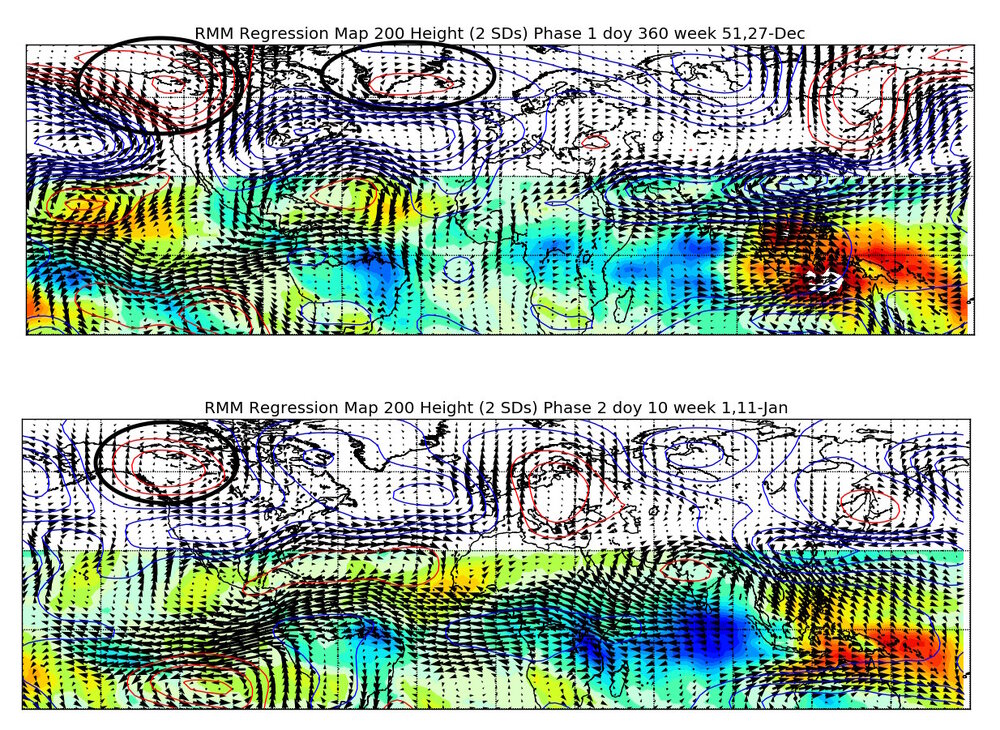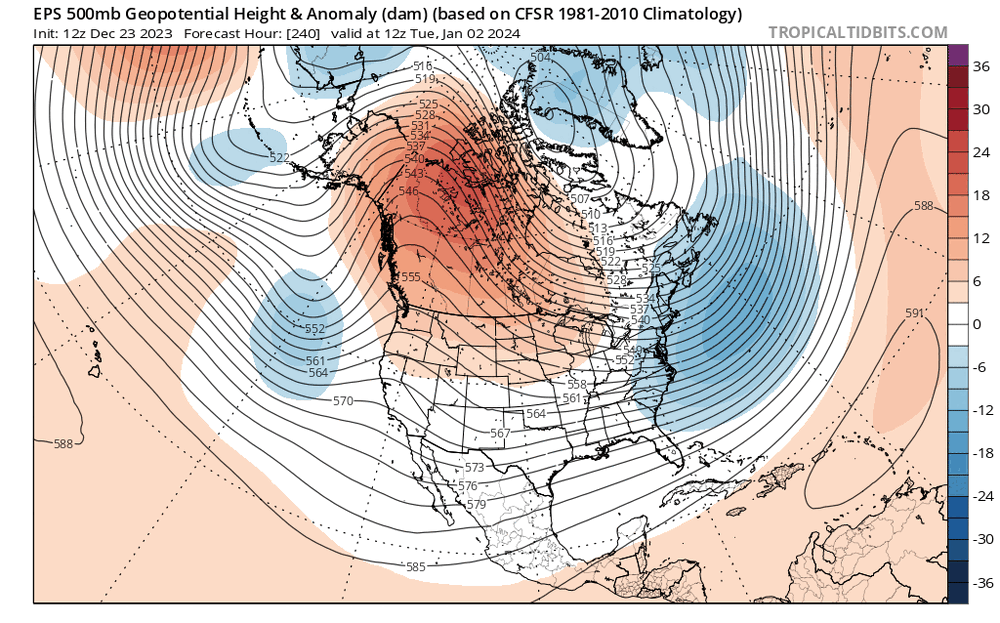
OHweather
Meteorologist-
Posts
5,004 -
Joined
-
Last visited
Content Type
Profiles
Blogs
Forums
American Weather
Media Demo
Store
Gallery
Everything posted by OHweather
-
This lake enhanced band is quality...night and day compared to the widespread synoptic stuff. Just stuck the ruler in (didn't do a formal measure and clear) and have about 2.5" new since 8:30 (storm total nearing 4") and it is dumping dendrites under the band at the moment. Hopefully it persists through the late afternoon and swings around enough to give everyone a nice boost. Edit: 7" LSR from near Lakewood where the lake enhancement was more persistent this morning.
-
The Google search is concerning because I could see a lot of people doing something like that. A lot of the default phone apps use AccuWx or TWC as their "data" (I'm sure there are some others though)...which is better than Google at least, but still iffy. Snow has picked up somewhat in Macedonia where I am...probably close to an inch new since I measured. Hopefully we're looking at a nice, snowy next several hours around here to make up for the lack-luster synoptic snow.
-
I agree with many of your points here...yes, that short burst of heavy snow last Friday heading into the evening rush was impactful and I would agree that peak rates (if they last any amount of time) are more important to the impact than the final storm total at the end of it. As for the weather app only showing 50/50 precip chances...I don't know what to tell you. I don't know who the provider is or how they come up with their forecasts. Seeing as though it's currently snowing everywhere it is garbage. I can see how 5-10" of snow on 50/50 chances for snow is confusing but the app appears to be bad. I usually advise people to pick a couple sources for weather information and stick to them..."shopping around" just gets confusing. I would suggest checking the NWS webpage (weather.gov/cle/winter) and social media (if you're on it) as those forecasts are what drive the watches/warnings/advisories...and we're certainly not perfect, but you're not going to get something there that's completely out of left field. You'll also be able to see the gridded snowfall forecast for the whole area, so you don't have to guess. There's collaboration that occurs shift to shift, between offices, and with the Weather Prediction Center (WPC) on things like QPF and snow so it's hard for a forecast that's entirely unreasonable to come out. And to be honest, I don't think our TV mets are bad in general, especially if you find a channel or met you like. I didn't catch all of them yesterday but I didn't see anyone hyping any crazy snow amounts, especially in Summit. I think people tend to run with the worst number they hear...and I do think it's a struggle to message storms like this where it won't be a heavy snow amount outside of the lake enhancement...and where the snow won't all fall at once. We never had 10" amounts listed in Summit County's warning, although if you told me that the warning probably doesn't apply to the southern half of the county I'd agree. We do attempt to keep these messaging/perception things in mind. This was posted to the NWS social media yesterday morning and emailed out to "core partners": It's not going to be perfect. The synoptic snow has trended down a good 1-2" farther south and west (and I hate that amounts in NW OH of 4-4.5" trigger the 4-6" range for the cities because they're realistically going to get 2-3"). But it also gets across that most areas are not getting 6"+ of snow in any 24 hour period, which was why we broke it down like that and sent it out. The areas that were forecast to get 6"+ in either window were where I did warnings yesterday morning (we no longer have a time constraint for warning criteria...just needs to be 6" for an event...but still wanted to draw a line somewhere). The big error here was the synoptic snow trending down 1-2", and the Erie/Huron warnings are probably not going to pan out. They have had some lake enhancement this morning but the best enhancement has already set up to the east and amounts so far out there appear to be 1-3". As for us farther east, the best lake enhancement is definitely working east now and guidance suggests it will pivot for a good few hours through mid-afternoon over parts of Lorain, Medina, and perhaps northern/western Summit before pushing farther east and transitioning to more traditional lake effect tonight. We still have a chance to pick up a decent amount of snow in parts of Summit through this afternoon.
-
1.4" new here so far. The synoptic snow was never going to be that exciting but it's going to end up being a general 1-3 instead of 2-5 across northern OH. Hopkins reported 1" of new snow last hour so the enhancement is working out...just need it to swing east, which is expected.
-
But is 4-6" of snow falling in a 36 hour period in Stow, which is what the forecast is, actually hyping it up big time? Can't control that all the schools are closing but the forecast is not for anything your area hasn't seen before. It'll be decent farther north where there's more lake enhancement.
-
I see it barely flaked before about 8am but is snowing half decently now. Hopefully, most or all stayed open today but close tomorrow (which is probably the correct answer in this situation) Hopefully the typical "OHweather reduction" doesn't come into play since we did all the headlines this morning That was my last shift of the stretch so I get to just watch it play out and enjoy the snow. Have a feeling that the abundant synoptic moisture and good ratios will lead to this performing well, hence the somewhat aggressive forecast, but always get slightly nervous when model QPF is somewhat modest and we need ratios to get the totals to pan out. It can work though. The lake effect will linger all the way through Saturday in the primary snowbelt...likely won't be heavy by then outside of the Lake Huron band (which will be farther east) but it will snow for a long time.
-
Let’s talk winter!! Ohio and surrounding states!!
OHweather replied to Steve's topic in Lakes/Ohio Valley
On Friday the general consensus was that the low would bottom out around 975mb Saturday morning. It ended up getting to about 980mb. So it was a bit weaker than expected, and the gradient winds on the backside were slightly weaker as a result..the High Wind Warning verified in spots, but the southern row or so of counties in the warning fell a few mph short. -
The setup tonight into tomorrow is odd...narrow band of snow, the lift isn't that strong, but it looks like it'll be a very fluffy / high-ratio snow so it'll stack easily...plus it will be falling onto cold roads. I'm not that impressed through about 7am, seems like any accumulations by than are on the order of half an inch to an inch in Toledo. Lift does get a bit stronger starting right around 7-8am, so I could see spots getting another couple inches the rest of the morning. It should become much lighter during the afternoon. I realistically think the Toledo area gets 1-3" but with the heaviest occurring between like 8am and Noon. Someone could get a fluffy 4" but most will be less and feel like 3-4" amounts would be more likely into MI. There will be a sharp southern cut-off, so there's some chance it stays a bit farther north, though a total whiff seems pretty unlikely. I I think Friday morning is a little more clear cut, it'll snow 2-4 or 3-5" everywhere out there with peak rates between 3-9am (give or take).
-
Same criteria for warnings and advisories across the whole CWA (though if push came to shove we may be slightly more inclined to issue products for marginal amounts outside of the primary snowbelt). We have a bit less snow in the forecast in Ashtabula and NW PA than where the watch is, though I suspect we may eventually need warnings out that way because it will keep snowing through Saturday downwind of Lake Huron. I am excited for the snow and excited for the forecast shift tonight!
-
Did Someone Say Clipper(Hybrid)!?! 1/18-1/19
OHweather replied to Frog Town's topic in Lakes/Ohio Valley
Interesting little warm air advection/frongogenesis driven snow potential on the front end of things tonight into Thursday...I expect the "clipper" (more hybrid) and lake effect Thursday night into Friday to perform quite well. Soundings suggest a deep DGZ and good snow growth with the clipper. Instability will be deep over the lakes beneath the lobe of the PV. The primary shortwave responsible for this system...can call it a clipper I guess, it does move over southern Alberta...has Pacific origins. It is modeled to interact positively with both a small lead wave in the subtropical jet over the Ohio Valley Thursday night but also the incoming lobe of the PV. Models have converged on this idea of a positive interaction between these features occurring Thursday night into Friday morning as the "clipper" takes on a negative tilt. The addition of moisture from the sub-tropical piece (and a bit of moisture from the Pacific), along with the increase baroclinicity provided as the polar vortex and Arctic air come in, allows for potential for a large swath of moderate, high-ratio snow accumulations. This has more upside than a standard clipper. Note in the 500mb loop that the PV lobe swings through the southern Great Lakes through Saturday, bringing in deep cold air and allowing for strong instability to develop over the lakes. This instability, combined with lingering synoptic moisture and lift as a pronounced inverted trough axis hangs back into the Great Lakes in the low-mid levels, will support robust lake effect snow well into Saturday. This should be a fun sequence that produces fluffy snow in a large area and is ripe for mesoscale surprises, especially near the lakes. -
The satellite loop from this afternoon is encouraging...not really much in the central basin and the ice out west has moved some, and you can tell there's some flux through it still. We'll see how much more can grow the next couple of days...tonight will be quite cold so I'm sure it will grow, but we get more strong SW winds over the lake tomorrow. Winds get much lighter Thursday-Thursday night but air temps over the water won't be as cold then as they will be tonight. I'm sure there will be net ice growth between now and Friday, but east of the islands should still be open enough for a decent heat/moisture flux.
-
In spite of the ice, I’m probably more optimistic about the next 4 days regarding snow locally than I’ve been about any 4 day stretch so far this winter. Which isn’t saying too much
-
Haha it’s all good, I used to be the one making posts criticizing our local office and I think part of it is just not being aware, from the outside, what the thought process was…since it was my forecast shift I don’t mind explaining what my reasoning and thought process was. This was a tricky scenario/low confidence forecast given the mild temperatures, and in hindsight I wished I went with my gut feeling when the snow first started as impressively as it did.
-
To be fair, I hit send on this a little earlier than these posts: URGENT - WINTER WEATHER MESSAGE National Weather Service Cleveland OH 248 PM EST Fri Jan 12 2024 OHZ003-130000- /O.NEW.KCLE.WW.Y.0002.240112T1948Z-240113T0000Z/ Lucas- Including the city of Toledo 248 PM EST Fri Jan 12 2024 ...WINTER WEATHER ADVISORY IN EFFECT UNTIL 7 PM EST THIS EVENING... * WHAT...Wet snow occurring. Additional snow accumulations of up to two inches. * WHERE...Lucas county. * WHEN...Until 7 PM EST this evening. * IMPACTS...Plan on slippery road conditions. * ADDITIONAL DETAILS...Heavy wet snow will impact travel conditions through the evening commute. We were aware of the potential for an impactful burst of wet snow in the Toledo area, but yes the advisory came out later than would've been preferable. I had a bit of a gut feeling around 1 PM when TOL immediately dropped to 3/4 mile visibility in snow when precip came in...but since it was still 36-38 degrees across Lucas County, raining in Wood County south of the turnpike, and only sticking to grass in western Lucas County (not in the city of Toledo) I wasn't sure if it'd snow long enough to accumulate 2"+. I have no problem issuing an advisory for less than 4" of snow (our technical advisory criteria) based on impact, but there has to be a line somewhere and I don't want to do an advisory if I'm not confident it'll snow at least a couple inches. We issued a Special Wx Statement for up to 2" of quick snow accumulation and slick road conditions around 1:20. By 2:30 Findlay flipped to snow, precip rates were intensifying, and snow was sticking to roads in Lucas County. It was obvious that conditions would be poor through the evening commute and also that snow accumulations would be a good couple/few inches in western Lucas County, so we went with the advisory at that point.
-
I'm seeing snow maps on that page from 3:36 PM still. I looked at the NDFD (NWS forecast grids) on WxBell, the snow amounts went down about 1-2" from the 3:36 PM forecast. The rest of my post isn't addressed at anyone in particular so not lecturing, just explaining. I'm not sure what LOT does, but in eastern region we have mandatory near term updates every 3 hours. I'm guessing they have similar at LOT. Evening shift is more than entitled to another look at the forecast based on observed trends, rapid update models, early arriving 0z models, etc...and yes even another set of eyes. Different mets are allowed to have slightly different interpretations. Evening shift involves a full set of TAF (airport forecast) updates which is extremely important for ORD and MDW. It's also the last look at the forecast before the morning commute, so if it's snowing during the morning commute it's the last chance to message it with leadtime. I don't see this as a drastic change by LOT this evening or as anything that's out of the ordinary to tweak a high-impact forecast for an ongoing winter storm. Given how mild this storm is, slightly lower numbers are always a risk. Still should be fun and exciting tomorrow.
-
The updated LOT snow grids are about 1-2" lower on average than the prior, with similar or slightly higher (by about 0.05") QPF. It's not a big change. Storms with a ton of QPF, a period of heavy rates and low ratios are horrible for the roads and are very impactful. With that said, temperatures across most of the LOT forecast area will be 31-33 degrees during most of the snow (warmer along the lake and mainly at or slightly above freezing (even inland) during peak heating). It will be hard to measure high totals. Someone certainly can where the band pivots...2"/hour adds up fast. But where those heavy rates aren't quite as persistent it'll be harder to stack it that fast. Doesn't reduce the impact. Getting 1-1.20" of QPF as wet snow followed by gusty winds is definitely enough of a combo for power-outage concerns, especially where it's near or slightly above freezing for a good portion of the snow.
-
Steady snow at night in January at 32-33 degrees can definitely coat roads. Ground is never all that warm in January. Although I slightly downplayed amounts in NE IL tonight, it'll be slick when it's snowing with this denser wet snow...and some of the obs in this thread from where it's snowing and down to 32-33 seem to suggest it can accum at a half decent rate where the heavier returns are.
-
Was just looking at some soundings for northern IL/Chicago and vicinity...my impression is to keep expectations somewhat modest for tonight but holy cow it could dump during the day Tuesday, especially in the late morning through mid-afternoon timeframe. The incoming precip is steady but there isn't any heavy mesoscale banding or anything like that, just a typical warm air advection slug...there are some disorganized more intense bursts, and these soundings from both the NAM and HRRR suggest that'll continue to be the characteristic of the precip as it lifts north tonight: Both models have a deep saturated layer with weak to moderate lift so it will steadily precipitate. Both soundings are solidly cold enough for snow above the immediate surface...with room to wet-bulb a couple degrees from current temperatures it should be able to settle to 32-33 where it's steadily snowing away from the immediate lakeshore in urban heat island. These areas (downtown and immediate lakeshore) will struggle to cool below 34-35...there probably will be some bursts that lightly accumulate on elevated surfaces pretty close to the lakeshore tonight, but they will get noticeably less than farther inland. While there is weakened stability above the DGZ, both models have very weak mean omega in the DGZ. This suggests that it will generally be a steady light to moderate, fairly low-quality wet snow. However, there will be brief times where lift gets into the DGZ with brief embedded bursts that are more convective. This will result in transient heavier and fluffier snow with larger flakes. Kind of seems like a 1-3" type deal (most areas a bit inland 2-3") for tonight's leg. Now, during the day Tuesday there's a forced convective band wrapping into the deformation zone/CCB. This results in TROWAL development and increased low to mid-level frontogenesis as the TROWAL wraps into the colder air. Good agreement on the hi-res NAM and HRRR soundings. The above-mentioned forcing will allow for banded precipitation to develop with strong lift through a deep column, including in above the DGZ, with model soundings depicting weakened stability (certainly some slantwise instability) above the DGZ. This will be conducive to much heavier snow with larger flakes. Seems like this pivots from NW or North Central IL into southern/eastern WI for at least a few hours during the late morning and early-mid afternoon. As LOT's AFD mentioned, probably will be a very sharp snowfall gradient closer to the lake, as there will be a milder flow off the lake, along with the best banding likely setting up just slightly inland. It will not be terribly cold, so where the heavier rates are not present it won't accumulate as efficiently during the day. Along the lakeshore from Chicago south should cool towards freezing 1-4z as winds finally turn more northwesterly all the way to the lake, though by then the amount of lift left will be modest so any accums from downtown points south will be light at most.
- 826 replies
-
- 11
-

-

-
Winter 2023/24 Medium/Long Range Discussion
OHweather replied to Chicago Storm's topic in Lakes/Ohio Valley
Normally when I make a blog post I repurpose it a bit and upload it here as well, but I need to go in and delete attachments to make room for uploads and I also need to go to bed. So, I'll simply provide a link to the post. The tldr for the Midwest/Great Lakes/Ohio Valley is: A very active pattern with a -PNA and deepening cold out west continues through next weekend, with the cold air likely getting pulled in next weekend as a retrograding -NAO forces the cold air into the eastern US The air dropping into the west later next week into next weekend will be arctic and legitimately frigid. It will modify a bit before getting to this region but certainly not too much The cutter this Monday-Tuesday looks very robust and a swath of heavy, wet snow seems likely with it The storm Friday-Saturday will probably cut as well, but with more blocking in front of it and increased polar vortex influence may have more front-end snow and may have more room to trend suppressed if there's too much polar influence. That storm has high-end impact potential After that storm the storm track likely gets more suppressed. There may be a brief window for a wave to affect the Ohio/Tennessee Valleys around January 15-16 if the cold air isn't too suppressive. There may be clipper/lake effect potential for a brief window when the cold is most entrenched The pattern likely trends more zonal after January 20th with temperatures trending seasonal to slightly mild. While it will be harder to see an amplified/phased storm, the pattern will remain active with west-east moving systems. It won't be a torch, so some snow potential probably lingers through this milder spell, especially farther north Factors may align for a western ridge and more high latitude blocking the very end of January through the first half of February Regarding Friday-Saturday's storm, some really impressive ingredients in place: A prolonged cross-polar flow pulls Siberian air and a large chunk of the tropospheric polar vortex into Canada this upcoming week, with that airmass radiationally cooling and deepening over relatively fresh snowpack over western and central Canada. There's also some cold air getting pulled into the Great Lakes ahead of the storm, increasing potential for front end snow north of the approaching low. The arctic air building over Canada drops in behind the storm with a warm and humid airmass getting drawn up ahead of it: For good measure, these 3 pieces of energy in the arctic, polar, and sub-tropical jets will all potentially phase and the PV lobe may get pulled in as well, depending on where it is: This is an absolute powder keg of a set-up, if all 3 pieces phase and part of the PV gets pulled in it would be a high-end blizzard for someone. I would caution, however, that as exciting as the set-up appears to be that PVs don't always play nice with these set-ups and there is expected to be a retrograding -NAO in front of the storm. There's a chance this trends more suppressed, and the 0z EPS members are all over the place with the placement and minimum pressure with the low: The spread is to be expected this far out and there are a number of members that are nukes, into the 950s or 960s, but we will need to watch how the polar vortex looks to interact with the storm and if there's any suppressive influence or not. -
Winter 2023/24 Medium/Long Range Discussion
OHweather replied to Chicago Storm's topic in Lakes/Ohio Valley
I'd say the second week of January is looking about as good as it could at this point. While this period has always looked more interesting, there were some question-marks regarding exactly how much cold could build into North America, how favorable or unfavorable the western U.S. pattern would be and if there'd be enough blocking to overcome it. The persistent -NAO and -PNA signal has been solid on the ensembles for a few days, with decent trends towards a -EPO and overall more -AO as well. This would fill western Canada and the Rockies with legitimately cold air with an active storm track from the central Plains towards the Great Lakes, kicked off by the possible cutter around January 9-10th. This pattern looks most conducive from the central Plains through the mid-upper Mississippi Valley, Great Lakes, and interior Northeast, though with it turning colder and more active the potential for a bit of snow will also increase (relative to what we've seen so far this season) into the Ohio Valley. -
Winter 2023/24 Medium/Long Range Discussion
OHweather replied to Chicago Storm's topic in Lakes/Ohio Valley
Worth also saying that the 10mb zonal mean wind anomaly only getting down to like 3 m/s (not quite a SSW) instead of -2 m/s (a SSW) doesn't make a huge difference, as long as it significantly weakens and stays relatively weak for a while it'll support increased high latitude blocking. That's also an extremely impressive SSW signal on the weeklies still...not common to get what appears to be something like 65-70% of members agreeing on a SSW over 10 days out. -
Winter 2023/24 Medium/Long Range Discussion
OHweather replied to Chicago Storm's topic in Lakes/Ohio Valley
Those winter storms you saw the second half of last winter were impressive, and if they were shifted a couple hundred miles southeast I probably would've had a more positive impression of last winter. Hopefully we get a few weeks of sustained wintry conditions later January into February that allows any snow that falls to stick around a bit. I enjoy snow...falling, on the ground, whatever it's doing. I certainly enjoy the "chase" (forecasting, communicating it, etc.) and watching it play out the most, so while I appreciate deep winter periods with persistent snow packs I very much enjoy events like Michigan had last winter. I haven't posted on the vLab forum yet (actually haven't looked at it much), I will check it out! I find it kind of surprising that almost half of moderate to strong El Ninos finished colder than average there but I'd agree that the chances for this winter to are already very slim because of this month. However, I'm not surprised by how poor snowfall climo is in moderate to strong El Ninos there (and it's not any better for CLE...09-10 finished a bit below average snowfall at CLE, though our southern CWA got crushed in February that year and finished well above average, with 3 of our climate sites seeing their snowiest February on record with one of those being their snowiest month on record). 2015-16 did have a period of wintry conditions in the heart of winter which took the edge off the torch for sure...I was in SE Ohio at school for that one and they saw something close to an average winter as they got clipped by the massive January Mid Atl storm with a few other light to moderate events, which isn't too shabby for Athens, OH. It was a pretty slow winter in northern OH but still not nearly as slow as last winter was here. And I'd agree that the -PNA could offer potential for parts of this subforum...I think if there's something decent in the Ohio Valley it's more likely early on before the -PNA begins getting established during the second week of January. The -PNA should shift the storm track farther northwest, though as you alluded to the amount of blocking may determine if we can see a snowier outcome from the mid-upper Mississippi Valley into the Great Lakes. If there is enough blocking, the -PNA could actually end up yielded a pretty interesting mid-January to the northwestern half of this sub-forum. -
Winter 2023/24 Medium/Long Range Discussion
OHweather replied to Chicago Storm's topic in Lakes/Ohio Valley
Wanted to lay out some things happening with some larger scale pattern drivers now and over the next few weeks and look at how they may impact chances for cold and snow potential. Chicago Storm's post on the prior page touched on most of these things. Behavior of the Pacific jet and potential for high latitude blocking will determine much of how this goes...something that can probably be said most of the time in the winter months. Not to be a wet blanket here but I don't want to get expectations unrealistically high at this point. Much of the subforum is going to be in a rather substantial seasonal snowfall hole before any sort of sustained colder pattern develops. In a strong El Nino it's inherently harder to get into a polar jet dominated pattern with lots of cold, clippers, and lake effect snow...those are patterns that are productive for much of the Midwest and Great Lakes. The mid-Mississippi and Ohio Valley portion of this subforum has lower annual snowfall and may get lucky with an active subtropical jet in an El Nino, so on that I would say that region has the greatest potential to rally and finish near or somewhat above average snowfall at this point...if anyone can. For the rest of the sub a below average seasonal snowfall is by far the more likely outcome at this point, but the pattern will be colder and more conducive to snow at times so I don't think we're looking at another year without a winter. We should see some windows of more wintry conditions. A significant influence on the Pacific jet stream is East Asian Mountain Torque (EAMT). Remember that big cold blast in Siberia earlier this month? The Arctic high associated with that dropped across eastern Asia (and is still doing so early in the above loop). This denser airmass and higher pressure east of the Himalayas puts a torque against the planet's rotation, slowing it down an imperceptible amount. To conserve momentum, this is compensated for by speeding up the jet stream over the Pacific...promoting stormier conditions over the northern Pacific. The Rockies can have a similar affect on the jet stream over the north Atlantic. Note how a strong positive EAMT event occurred over the last week or so as the Siberian high dropped into eastern Asia. EAMT will generally trend more negative over the next 2-3 weeks, though I'd say it's possible we see one last little push of +EAMT in the first few days of January which may be important to determining how quickly the Pacific jet retracts in the coming weeks. The strong +EAMT led to the dramatic intensification of the north Pacific jet ongoing now, though the jet will begin retracting over the coming days and continue retracting/weakening into early January as EAMT trends more negative (and as tropical forcing changes, will get into that below). The stronger jet leads to stronger ageostrophic flow within its embedded jet streaks, encouraging a stormier (and amplified) pattern, especially near the eastern edge of the jet where the upper-level flow is most diffluent. As the jet reached its easternmost extension over the last few days the stormy pattern was over the southwestern US with ridging amplifying northeast of that. As the jet begins retracting over the next several days the stormy pattern will shift west into the Pacific, allowing ridging to shift west towards the west coast and Alaska while continuing to amplify. This jet evolution has strongly contributed to our ongoing mild pattern and the change will contribute to a period of cooler conditions to start January. https://www.atmos.albany.edu/facstaff/awinters/realtime/Deterministic_NPJPD.php Wanted to demonstrate how important the Pacific jet has been on the pattern we are seeing. Per the analysis, we went from a jet retraction in mid December to a recent poleward shift of the jet. The jet is expected to be more characteristic of the "jet extension" phase the rest of this month, before briefly moving through an Equatorward Shift space back towards jet retraction (due to the negative trend in the East Asian Mountain Torque). Poleward shift heights and resultant temperatures: A very Pacific-dominated pattern with minimal polar/arctic influence and very mild conditions across a good portion of Canada and the northern CONUS. Very similar to what we're currently seeing. How about a jet extension, which is what we'll see over the coming days? Supports increasing heights along the West Coast and into Alaska, less Pacific influence, and at least some polar and arctic influence into North America, with cooler anomalies over parts of the eastern U.S. Looks a bit like the pattern showing up on the models and ensembles over the next week. An equatorward shift is inherently hard to sustain in an El Nino but is most conducive to EPO-induced cold shots into southern Canada and the CONUS: Jet retractions favor flatting ridging farther west over the North Pacific...a -PNA pattern, which is showing up in the extended ensembles... Tropical forcing is also influencing the pattern...the MJO is making a fairly amplified pass through phases 1-2 through early January: This supports amplification of western North American ridging and at least some semblance of a -NAO (Phase 1 top, Phase 2 bottom): https://www.atmos.albany.edu/facstaff/roundy/waves/rmmcyc/index200reg.html So far the East Asian Mountain torque and tropical forcing do a good job of explaining the evolution of the Pacific jet and the recent/upcoming North American pattern. The troposphere and stratosphere have seemed to be relatively well-coupled so far this season, with an amplified pattern in the troposphere in late November and early December leading to increased upward heat and wave fluxes into the stratosphere. This has led to an ongoing stratospheric warming event that appears poised to downwell into the troposphere. https://stratobserve.com/anom_ts_diags Not only do the mountain torque and tropical forcing support amplified ridging on the west coast into Alaska the rest of this month into early January, along with perhaps a -NAO, but the downwelling negative AO out of the stratosphere supports high-latitude blocking. Lots of factors supporting the pattern change that will be getting underway very soon. Here's a look at the EPS mean 500mb and surface temperature forecasts through the upcoming pattern change: The 500mb evolution shown on the ensemble seems strongly supported by the various forcings described above over the next 10 days. The ongoing storm over the central U.S. starts carving out a trough over the eastern US over the next several days, with amplifying ridging on the west coast deepening the trough over the next 10 days as energy ejects out of the southwest U.S. in the subtropical jet. This leads to increased polar influence into Canada and the U.S., but the source region is currently very mild which will take quite a while to completely overcome. The result is a cooler trend over the CONUS, especially over the southern U.S. where the active subtropical jet keeps conditions more active. Over Canada it remains generally mild for the foreseeable future but certainly trends much less mild than recent conditions. It's worth noting that this is a change from temperatures well above freezing all the way to Hudson Bay to sub-zero temperatures (on the ensemble mean) down to at least that latitude: The tug of colder air behind the current Plains storm is very meager but the colder air becomes much more "tappable" by the beginning of January, so any storms that develop will be able to pull in seasonally cold air. Nothing crazy but certainly much more wintry feeling that at the moment. Note those frames are all 12z which catches something close to the daily lows. While the tropical forcing, mountain torque/Pacific jet, and stratospheric influence support upcoming amplification of ridging along the West Coast into Alaska and perhaps a -NAO, there are certainly hints at a more -PNA pattern taking hold in two weeks. Is that legit? Recall back to the SLP loop and the mountain torque discussion: A sustained negative EAMT event appears likely in early January, supporting retraction of the Pacific jet (and a -PNA). Note how a similar evolution (about a week later) of Rocky Mountain Torque supports ridging over the North Atlantic, as a +RMT and strong North Atlantic jet to start January gives way to a -RMT and weakened North Atlantic jet by the second week of the month. https://charts.ecmwf.int/?facets={"Product type"%3A[]%2C"Parameters"%3A[]%2C"Type"%3A[]%2C"Range"%3A["Extended (42 days)"]} There is some uncertainty regarding how the MJO evolves beyond the next 10 days. Many ensemble members have the wave weakening and moving into the "circle" in the day 15-20 range (blue and green dots, valid the 2nd week of January). A number of members maintain amplitude into phase 3 and some into phase 4 and 5. That seems unlikely but the ongoing stratospheric warming event may support a stronger and more amplified MJO moving across the Indian Ocean and into the western Pacific mid-late January...a trend worth monitoring. Even a phase 3 MJO in early January suggests a trend to a more -PNA/west coast trough: To sum up where things are so far: Tropical forcing, mountain torque/the Pacific jet and stratosphere support a pattern change over the next week. This will increase polar influence into Canada and the U.S. and favor development of an eastern U.S. trough during the first week of January. Mountain torque and tropical forcing suggest continued Pacific jet retraction in early to mid-January, which will encourage ridging to retrograde across Alaska as troughing over the eastern CONUS also retrogrades/shifts west. This will lead to conditions initially supporting any southern stream systems bringing a wintry threat to the interior Southeast/Mid Atlantic the first few days of January, but with wintry potential shifting west across this subforum in the January 4-10 range...perhaps lingering through the middle of January if ridging doesn't shift west towards the west coast too quickly. With generally mild conditions persisting over Canada the pattern won't favor strong clippers or huge arctic outbreaks that can set off days-long lake effect snow storms, but southern stream storms may be able to bring swaths of snow if they phase enough with the polar jet. And, a modest clipper and some lake effect could still be possible with Canada trending more seasonal. Looking further ahead, a number of EPS members have a significant stratospheric warming event (SSW) between January 5-15. If this occurred it would lead to greatly increased potential for sustained high-latitude blocking beginning in late January and persisting well into (and perhaps through) February. It is very common for a warm-up to occur over the central and eastern U.S. as a stratospheric warming event is ongoing, before any blocking it sets off can establish. This would line up with hints of a -PNA and +EPO towards the middle of January. https://www.cpc.ncep.noaa.gov/products/precip/CWlink/MJO/mjo.shtml Looking at tropical forcing, the forcing has generally been amplified over the central Pacific (near 180 longitude) and over the western Indian Ocean (near 25E), roughly outlined by the green boxes. Tropical forcing has generally been suppressed between these two areas. The tropical forcing has moved through the western hemisphere (phase 1 MJO and favorable for colder weather) every 3-4 weeks. If this continued it would move back through the western hemisphere by the middle of January. However, it seems like the tropical forcing was more driven by faster-moving Kelvin Waves until the two most-recent orbits, which featured stronger and slower-moving anomalies more typical of the MJO. This most recent pass remained strong through the eastern Indian Ocean subsidence zone but also took closer to 4-5 weeks to return to the western hemisphere. If this more recent trend continues it will return to the western hemisphere in the ~3rd week of January and support a more favorable Pacific influence on the pattern, along with a -NAO. However, the stratospheric warming event over the pole leads to a colder lower stratosphere over the tropics, which may amplify and slow down the progression of the tropical forcing. I would say smart money is on tropical forcing becoming favorable for a western North America ridge to return during the last week of January. Potential exists for prolonged -NAO blocking by then if we do in fact see a major stratospheric warming event (which appears likely during the first half of January). After the cool down into early January, leading to a favorable pattern for any amplified southern stream system to bring snow potential to the region in the January 4-10th timeframe, along with perhaps a modest clipper and some lake effect, a trend towards a trough with colder air over the western U.S. and ridging farther east is supported for the middle portion of January. By the end of January potential appears to be there for impacts from a stratospheric warming event and tropical forcing to support a western North American ridge, eastern trough, and high-latitude blocking with an active southern stream. This would lead to a few week period of more wintry weather, and while unlikely to make up for seasonal snowfall deficits completely could salvage a semblance of a winter in the region. -
Winter 2023/24 Medium/Long Range Discussion
OHweather replied to Chicago Storm's topic in Lakes/Ohio Valley
Assuming I have time tonight I'll try to put together a post laying out my thoughts a little bit more...I'd agree that the Pacific jet drove things last winter and has largely driven things this winter. Any PV split probably won't happen until about January 5-10th, and if that does couple to the troposphere and lead to persistent high-latitude blocking that blocking likely wouldn't establish itself until the second half of January. These things just don't happen on timescales that are as quick as everyone wants...you can see the early signs of a pattern that may lead to an SSW two full months before it leads to blocking, which is an eternity when the pattern sucks and you want it to change. And unfortunately many people just use those early signs as something to hype without throwing in a line about how long it would take to get results. For the time being, the Pacific jet will continue to dictate things...we'll have a period of more seasonal weather to start the New Year. It does look like there will be at least a transient period of western US troughing and eastern North American ridging in the middle 1/3rd of January, but I am leaning towards a more prolonged pattern change after that. -
Winter 2023/24 Medium/Long Range Discussion
OHweather replied to Chicago Storm's topic in Lakes/Ohio Valley
Couldn't have said it better myself. Great post!! Pretty much in agreement with you. This type of evolution, with multiple troughs ejecting out of the west as the PNA trends negative...but with some sort of a PV over eastern Canada and a bit of downstream blocking, keeping things from cutting/amplifying too much...would bring at least some snow potential to the region January 4-10th or so...maybe lingering longer if the blocking can persist. I feel like the change to more polar influence and some blocking (both in the northern Pacific and Atlantic IMO) are strongly supported by the larger-scale drivers (tropical forcing, mountain torque, stratosphere) as @Chicago Stormlaid out. I don't think we'll get a great clipper pattern or persistent arctic air, which are the bread and butter of upper Midwest and Great Lakes snow climo, but some colder air and southern stream influence should bring trackable potentials at least.

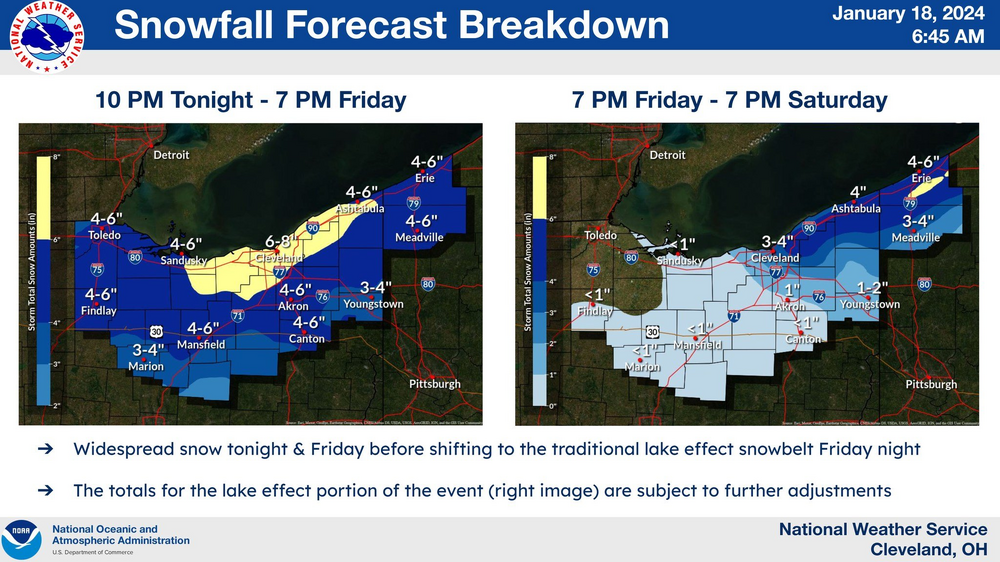
.thumb.jpg.806f426f4131c8a190b571d556c090e6.jpg)
.gif.aec1a52979139838bc1f7c3cf423b00f.gif)
.gif.41687008aad0962ba1724a0a3fcfa7ea.gif)
.gif.800ed9348f516c7d3a12427c70d1f8b1.gif)
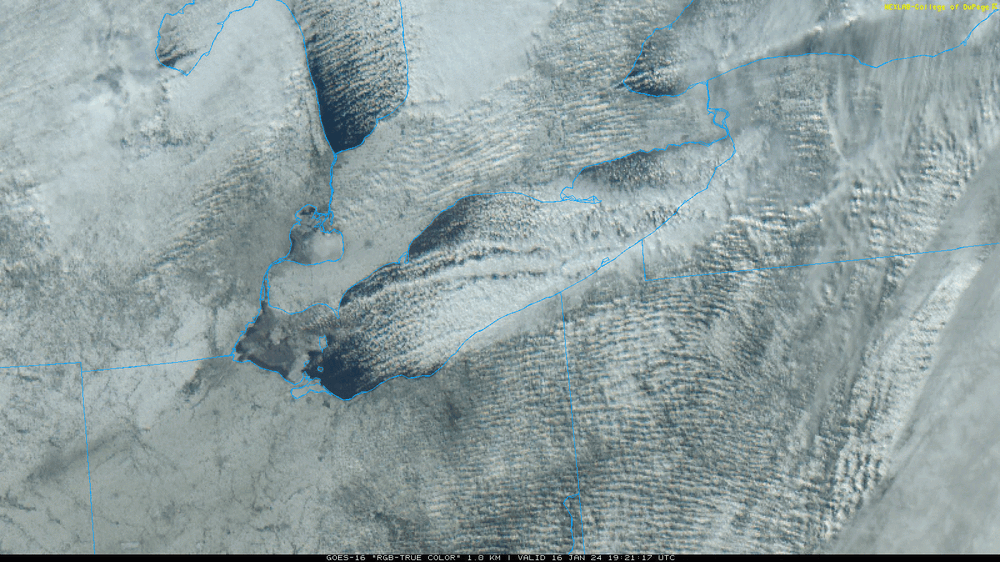
.thumb.png.abab7dcb54e0c93f0657f2c69789a28d.png)
.thumb.png.30f7b31058acc5674b7a7fd276e3f32a.png)
.thumb.png.24dd07cc234013bfe425b7071a1ea599.png)
.thumb.png.bd00b7753cf198201ce08dcaf638ed3d.png)
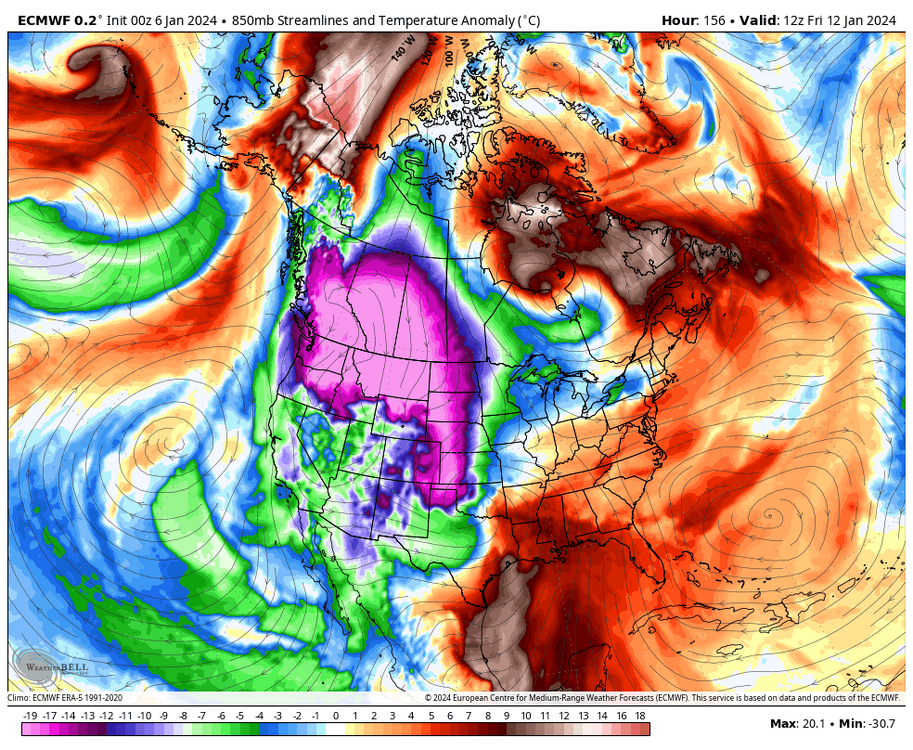
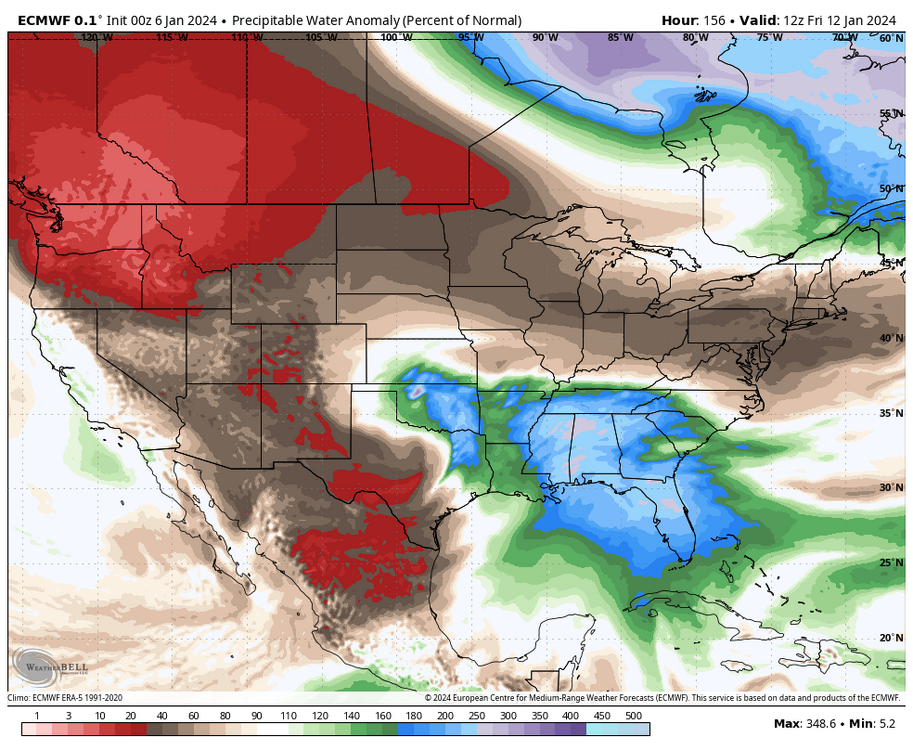
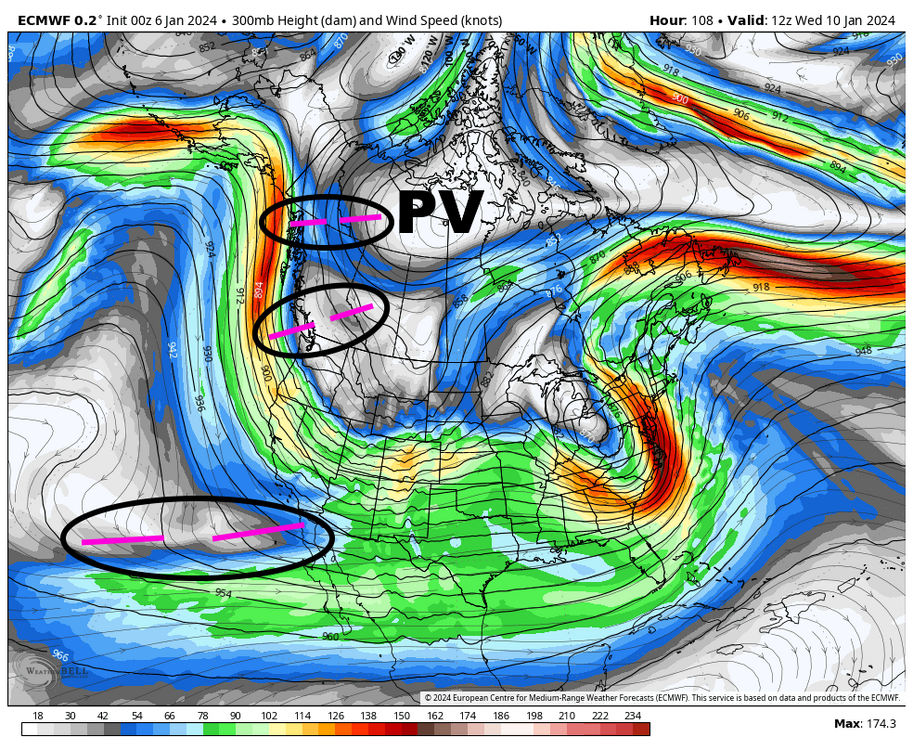
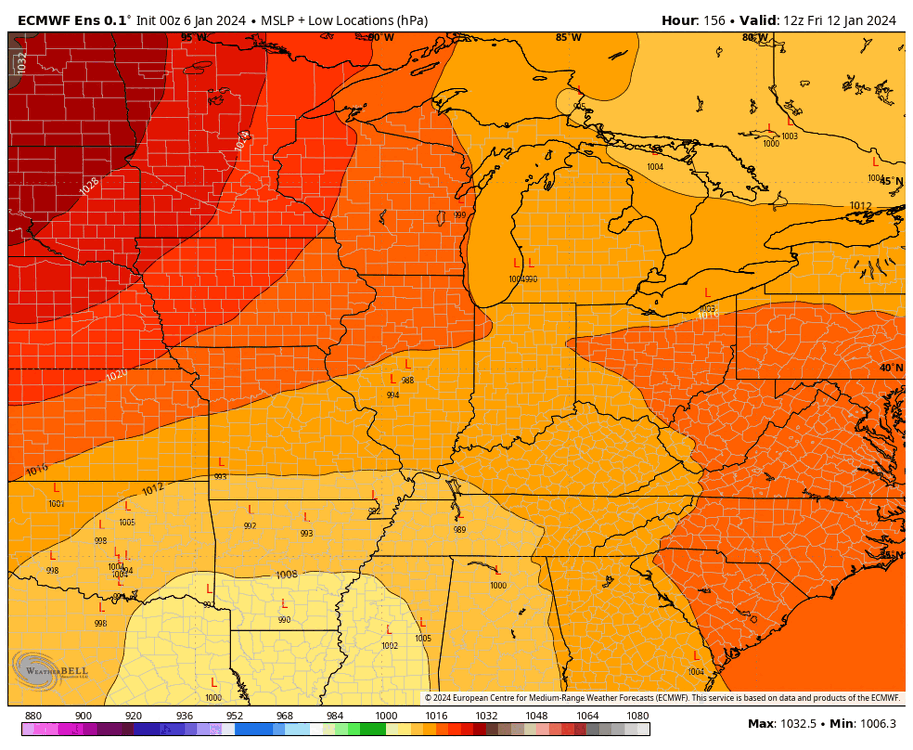

.thumb.gif.cb1afda302c5f73ab389fe9c67991bfe.gif)
